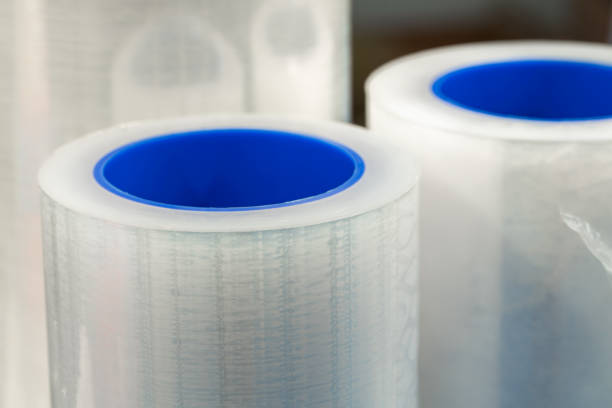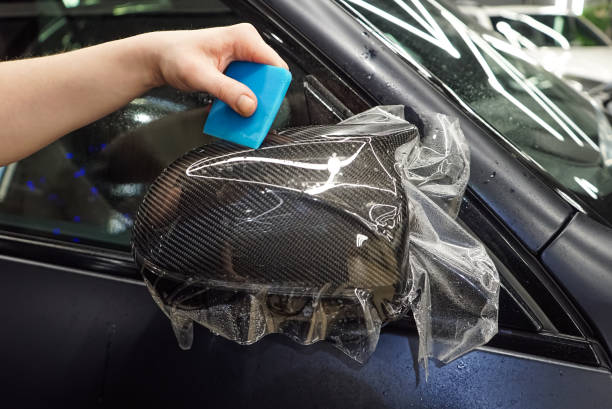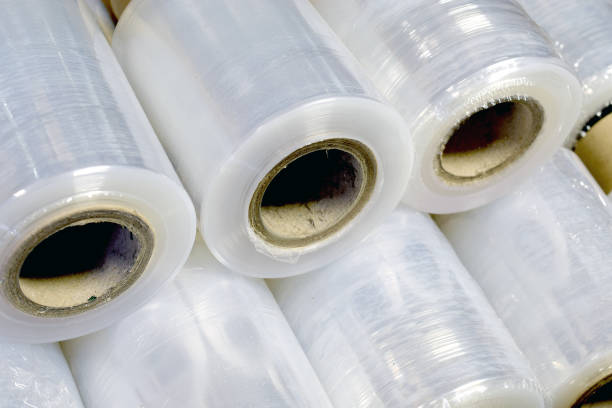Polymers used in polymer films

In today’s world, we are witnessing the widespread use of polymer films in both everyday life and industry. Polymer films are thin, continuous, and flexible layers made from polymeric materials, typically with a thickness of less than 0.3 mm. Thicker types are referred to as “sheets.” These films are crucial in packaging, protection, decoration, and even information transfer (such as printing).
Plastic films are widely used in food packaging, carrier bags, industrial wraps, labels, electronic components, hygiene products, and medical applications. Since the type of polymer used determines the final properties of the film, understanding the different polymers and their characteristics is essential for choosing the right material for each application.
The Importance of Polymer Films in Industry
Polymer films rank at the top of plastic consumption in terms of application. This importance stems from properties such as light weight, high flexibility, cost-effectiveness, ease of processing, and the ability to fine-tune properties through additives and various compounds. Selecting the appropriate polymer can significantly impact the final product’s quality, durability, performance, and cost-efficiency.
Key Properties to Consider When Choosing a Polymer
Before diving into the different types of polymers, it is useful to highlight some of the main characteristics that are considered when selecting a suitable polymer for film applications:
Permeability to water vapor, oxygen, and other gases
Tensile strength and mechanical resistance
Transparency and printability
Service temperature and thermal resistance
Cost and availability of raw materials
Processability (suitability for molding, blowing, extrusion, etc.)
Sealability and lamination capability
Overview of Common Polymers Used in Polymeric Films
Below, we introduce some of the most widely used polymers in the production of polymeric films:
1. Low-Density Polyethylene (LDPE)
Polyethylene is one of the most commonly used polymers in the polymeric film industry. Due to its high flexibility, good transparency, and acceptable moisture resistance, LDPE is suitable for the production of bread bags, confectionery packaging, and shrink films. It is also easy and cost-effective to produce, which contributes to its popularity in various applications.
2. Linear Low-Density Polyethylene (LLDPE)
LLDPE has a structure similar to LDPE but offers higher tensile strength and better impact resistance, making it ideal for applications requiring enhanced durability. Films made from this polymer are widely used in stretch packaging, food transport bags, and compression packaging. It can also be processed into films through blown or cast extrusion methods.
3. High-Density Polyethylene (HDPE)
Compared to LDPE and LLDPE, HDPE is more rigid and less transparent. It offers greater resistance to puncture and tearing and is commonly used for shopping bags, industrial liners, and heavy-duty packaging. Due to their high density, HDPE films exhibit superior mechanical strength. [Click here to read more about the differences between LDPE and HDPE.]
4. Polypropylene (PP, OPP, BOPP)
Polypropylene is a key polymer in the film industry and is available in various forms, such as OPP (oriented polypropylene) and BOPP (biaxially oriented polypropylene). This polymer has excellent thermal resistance and performs well against moisture. Thanks to its clarity and glossy finish, PP film is a preferred choice for food packaging, labels, and metallized coatings.
5. Polyethylene Terephthalate (PET)
PET is a highly durable polymer known for its outstanding resistance to high temperatures and gas permeability. These properties make it suitable for packaging sensitive products such as meat, cheese, coffee, and even electronic components. PET films are also highly transparent and exhibit excellent dimensional stability.
6. Polyamide (PA)
Commonly known as nylon, polyamide is a strong polymer resistant to abrasion, heat, and gas permeability. Films made from polyamide are widely used in vacuum packaging, especially for meat, fish, and cheese. Due to its elasticity and high mechanical strength, polyamide is also used as a middle layer in multilayer films to enhance their overall performance.
7. Polystyrene (PS)
Polystyrene is valued for its clarity and high printability, making it suitable for food packaging, pharmaceutical products, and dairy containers. However, its brittleness and low impact resistance limit its use to applications that do not require high flexibility. It is most commonly used in disposable containers and packaging.
8. Polyvinyl Chloride (PVC)
PVC is a rigid and durable polymer that is available in both rigid and flexible forms. Plasticizers are often added to increase its flexibility. PVC is used in manual wrapping, meat packaging, pharmaceutical packaging, and hygiene products. It offers good dimensional stability and can be easily thermoformed into different shapes.
9. Polyvinylidene Chloride (PVDC)
PVDC exhibits outstanding resistance to the permeation of water vapor and gases. Films made from this polymer are ideal for pharmaceutical packaging, food packaging, and metallized films. In addition, it is highly resistant to fats and oils, and it maintains its properties under various environmental conditions.
10. Ethylene Vinyl Alcohol (EVAL)
Due to its polar structure and high crystallinity, EVAL offers exceptional resistance to oxygen permeability. This feature makes it highly suitable for packaging oxidation-sensitive materials and chemical products. However, its sensitivity to moisture usually requires it to be used between layers of polyolefins, such as PE or PP, to ensure better overall performance.
Comparison Table of Common Polymers Used in Polymeric Films
| Polymer | Transparency | Water Vapor Permeability | Heat Resistance | Tensile Strength | Main Applications |
|---|---|---|---|---|---|
| LDPE | High | Medium | Low | Medium | Food wraps, bags |
| LLDPE | High | Good | Low | High | Stretch packaging |
| HDPE | Low | Good | Medium | High | Durable bags |
| PP | High | Good | High | High | Packaging, labels |
| PET | High | Excellent | Very High | Very High | Meat, coffee, cheese |
| PA | Medium | Medium | Medium | High | Vacuum packaging |
| PS | High | High | Low | Low | Dairy, fresh food |
| PVC | Medium | Good | Low | High | Meat, medical packaging |
| PVDC | Low | Very Low | Medium | High | Pharmaceuticals, metallized films |
| EVAL | Low | Poor | Medium | High | Chemical packaging |
Conclusion
Through a detailed examination of various polymers, we can conclude that choosing the right material for the production of polymeric films depends on the final requirements in terms of resistance, transparency, permeability, and processability. Each polymer has its advantages and limitations, and by combining them in multilayer films, one can achieve optimal properties.
Polymeric films will continue to play a key role in the future of packaging, medical, automotive, and even construction industries. The smart selection of polymers can enhance product efficiency and durability while also contributing to reduced production costs.
Are you a polymer film manufacturer? What polymers do you use in your products? Share your experience with us!


